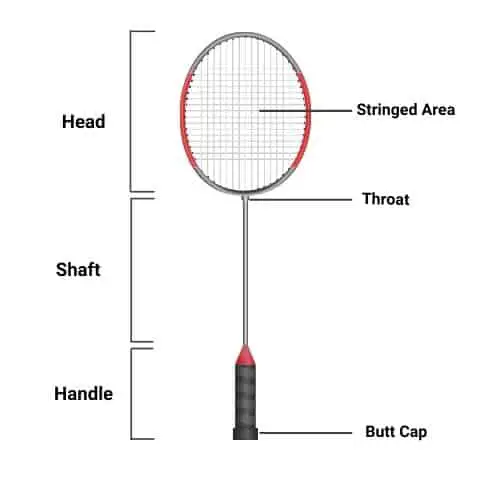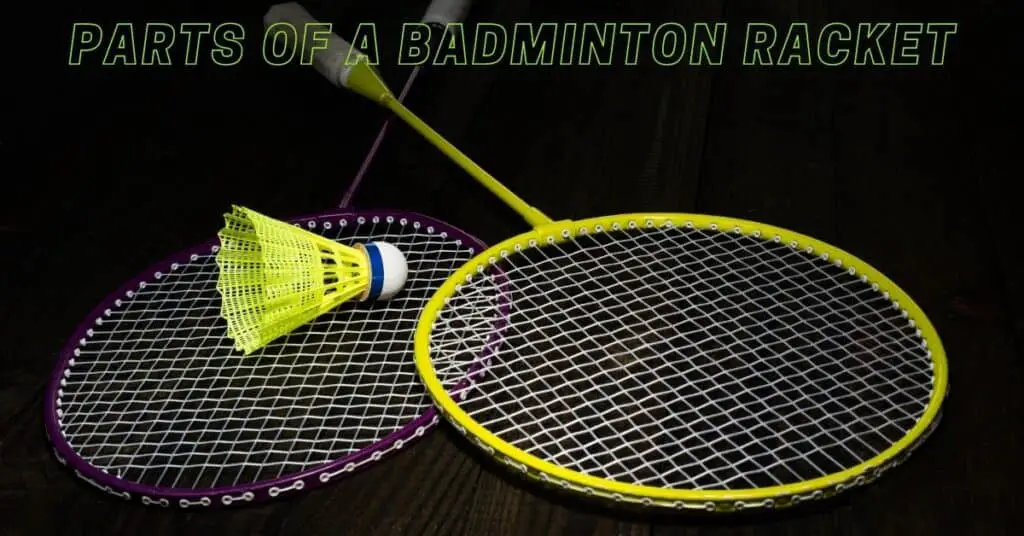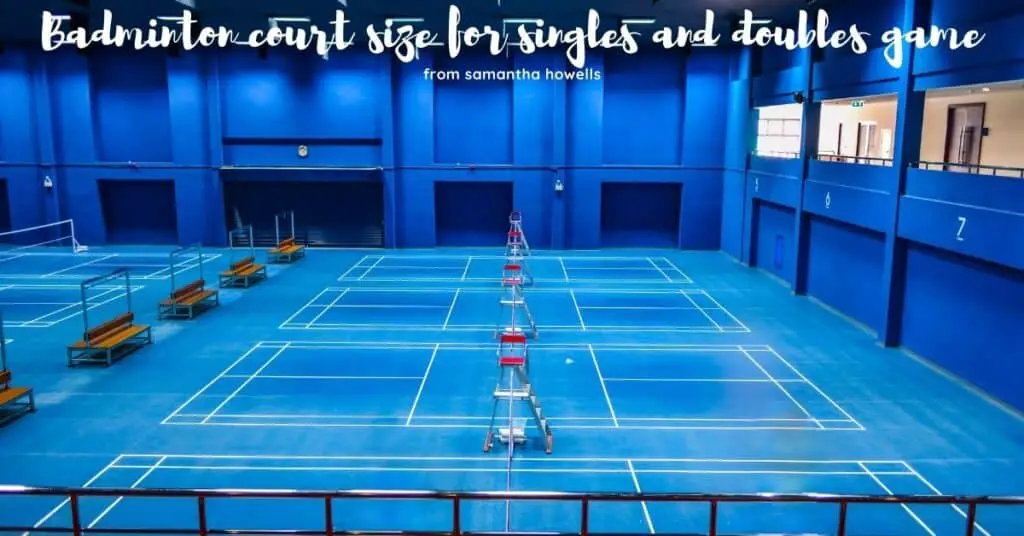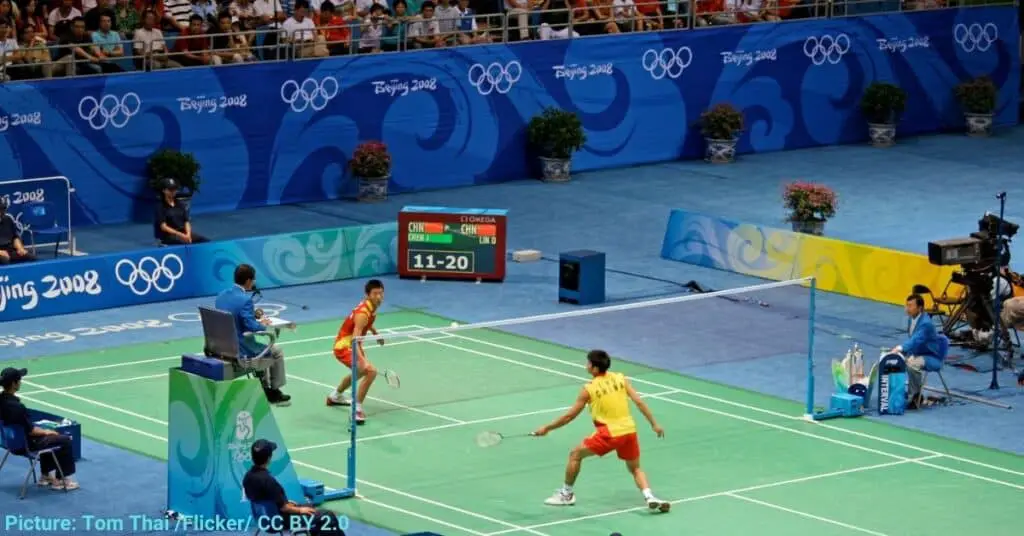Knowledge of the parts of a badminton racket is essential, especially for beginners who want to advance to a higher level. Badminton is the fastest racket sport that involves two or four players for the purpose of hitting a shuttlecock to and fro over a net following certain rules. A badminton racket looks simple, but it consists of several parts. Each part has its own characteristics, knowledge of which helps the proper selection of a racket.
Let’s come to the details.
Badminton Racket Parts

Badminton World Federation (BWF) fixes the length and width of a racket. The length and width can’t exceed 680 mm and 230 mm respectively.
In the past, wood was used as a material for the frame of a badminton racket. But nowadays, aluminum and graphite replace wood to make the weight of the racket lighter.
A badminton racket comprises 6 parts.
- Butt Cap
- Handle/ Grip
- Shaft
- Throat
- Stringed Area
- Head
Butt Cap
The butt cap is the end portion of a badminton racket. It is an enlarged portion that prevents falling the racket from your hand. Usually, a manufacturer’s logo is printed on the bottom of the butt cap.
Handle/ Grip
The handle is the part where you place your hand to hold the racket. The handle is covered by the grip. It helps to absorb sweat and protect from slipping the racket out of your hand. The grips are of two types, towel grip, and synthetic grip.
As the name suggests, towel grips absorb a lot of sweat but are not durable. In reverse, the synthetic grip is more durable but the absorbent capacity is less. The synthetic grip is more popular as it doesn’t require frequent replacement.
Shaft
The shaft is the connected portion between the handle and throat. In the absence of the throat, the shaft connects the head with the handle. The flexibility of a racket depends on the material of the shaft.
The more flexible the shaft is, the more power it can generate. On the other hand, a stiff shaft has the ability to control your shots for better placement during play.
Throat
It is the ‘T’ shape portion between the shaft and head that acts as a support for the base of the head. In many rackets, there is no throat. In this case, the shaft is directly connected with the head.
Stringed Area
It is the netted portion and the hitting area, made with nylon or carbon fiber. As per the rules of BWF, the stringed area must be flat. The strings must either interlace alternatively or form a bond where they cross. The total length and width of the stringed area must not exceed 280 and 220 mm respectively.
The thickness of strings plays a vital role in the performance of a badminton racket. The thicker strings show more control for more accuracy in your shots. In the case of thinner strings, the tension is more which gives more power.
Head
It is the top portion of the frame that holds the strings to form the string bed. The shape and weight of the head influence the selection of a racket according to your playing style.
The head may have an oval shape or an isometric shape. The isometric-shaped head has a larger sweet spot. So this type of head has a bigger area for smashes and hits. This allows the players to hit the shuttlecock with more consistency. This type of head is suitable for beginners.
The head with an oval shape has a less sweet spot. But if you hit the shuttle within this area, it will generate more power for your hits. This type of racket is for advanced and pro players.
Also, the weight of the head has an impact on the performance of a racket. A heavy head racket can produce more power to your smashes and hits with the sacrifice of control. In reverse, a light head helps to respond quickly to your shots. This enhances your defensive techniques with more command to your shots.
Wrapping Up
All parts of a badminton racket have unique characteristics. So before buying, you have to scrutinize each part of the racket carefully. Finally, select the racket that matches the style and the level of your play for the best results.
Related Topic: “Everything About Badminton Racket Length and Size“.




